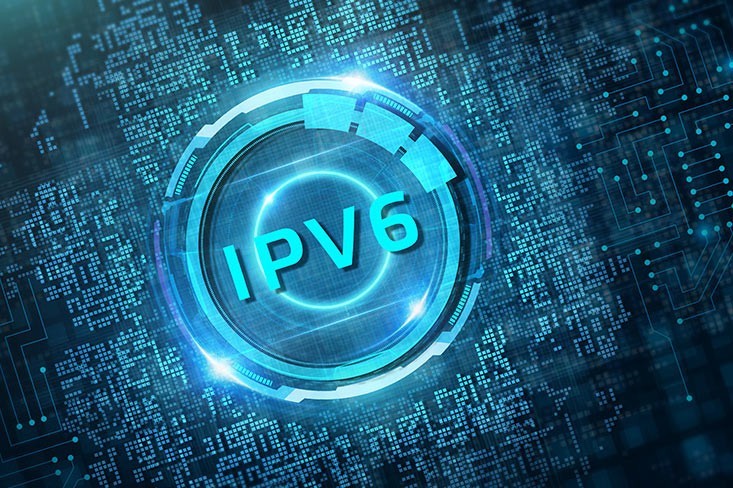
What is IPv6?
IPv6 (Internet Protocol version 6) is the sixth revision of the Internet Protocol (IP) and the successor to IPv4. It works similar to IPv4 in that it provides the unique IP addresses required for Internet-enabled devices to communicate. However, it has one important difference: it uses a 128-bit
IP address.
The 128-bit IPv6 protocol consists of eight numbered strings, each containing four characters (alphanumeric) separated by a colon. This gives us an incredible amount of unique IP addresses (340,282,366,920,938,463,463,374,607,431,768,211,456 to be exact). It also ensures that we won't run out of unique IP addresses to assign to new devices anytime soon.
What are the Benefits of IPv6?
IPv6 includes further improvements compared to IPv4. The IPv6 protocol can process packets more efficiently, improving performance and security. It enables Internet service providers to reduce the size of their routing tables by making them more hierarchical.
In addition to increasing the supply of IP addresses, IPv6 also addressed many of the shortcomings of IPv4. The most important of these is security.
IPv4 vs. Differences Between IPv6
The advent of IPv6 brought more functionality in addition to more IP addresses. For example, IPv6 supports multicast addressing, which allows bandwidth-intensive packet streams (such as multimedia streams) to be sent to multiple destinations simultaneously, reducing network bandwidth.
But does this make IPv6 better than IPv4?
IPv6 has a new feature called auto-configuration, which allows a device to create an IPv6 address as soon as it is turned on and put itself on the network. The device starts by searching for an IPv6 router. If there is one, the device can provide access to the wider internet by creating a local address and a globally routable address. In IPv4-based networks, adding devices is usually done manually.
IPv6 allows devices to stay connected to several networks simultaneously. This is due to its interoperability and configuration capabilities that enable the hardware to automatically assign multiple IP addresses to the same device.
IPv4 vs. IPv6: Speed Comparison
Theoretically, IPv6 is slightly faster as cycles do not need to be wasted on NAT translations. But IPv6 has larger packets, which can slow it down in some use cases. What really makes a difference at this point is that IPv4 networks are mature and therefore more optimized than IPv6 networks. So with time and tuning, IPv6 networks will become faster.
IPv4 vs. IPv6: Security Comparison
IPv6 was created with greater security in mind. IP Security (IPSec) is a set of IETF security protocols for security, authentication and data integrity and is fully integrated into IPv6. But IPSec can also be fully integrated into IPv4. It's up to ISPs to implement this.
Why Don't We Switch to IPv6 Permanently?
Legacy technologies take a long time to die out, and the transition to a replacement technology is never as rapid as its supporters would prefer. There will be a permanent transition to IPv6, but it will take decades to achieve. According to a report by The Internet Society, last year there were 49 countries in the world where IPv6 accounted for more than 15% of total IP traffic in 24 countries and exceeded the 5% threshold. As you can see from the report, the transition from IPv4 to IPv6 is progressing very slowly.
Advanced Service Quality Features
The Internet Protocol inherently treats all different applications indiscriminately with a best effort approach. What is this “Best Effort” approach? Packets are transferred to the other party without any prioritization. In fact, the content of the package you send is not important. It just does its duty and tries to convey it to the other party. It does not prioritize such as this package should go first, this package should go later. Failure to do so may result in uncontrollable traffic on the network. All the data suddenly falls into the network. Additionally, in this system, when packets arrive varies depending on the traffic on the network. In short, since our data may experience delays in this system, it may affect our internet performance. New fields in the IPv6 header allow traffic to be better identified and prioritized accordingly. Since this prioritization is done according to the information in the package header, the fact that the content of the package is encrypted does not affect the prioritization. Thus, we will obtain a traffic-controlled network.
Automatic Address Configuration
Automatic address configuration is one of the important innovations brought by IPv6. IPv6 allows networked interfaces to obtain addresses without an address assignment server on the network. In other words, your modem will automatically assign addresses to all devices in your home, and you will not need to make a separate setting for each device. After you make the necessary settings on your modem, you can do the rest.
Teknobil Telekom